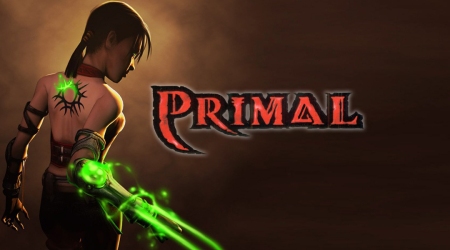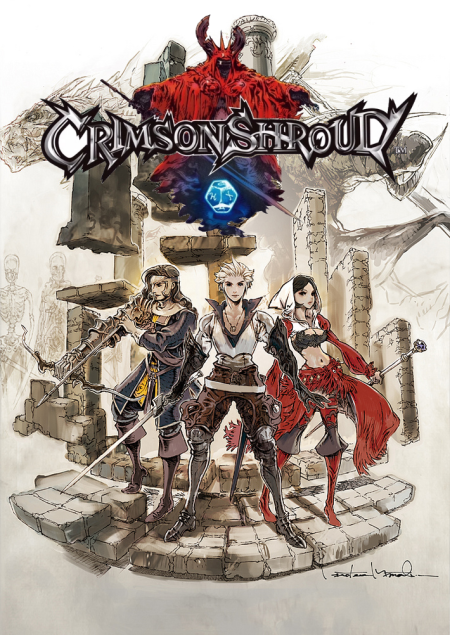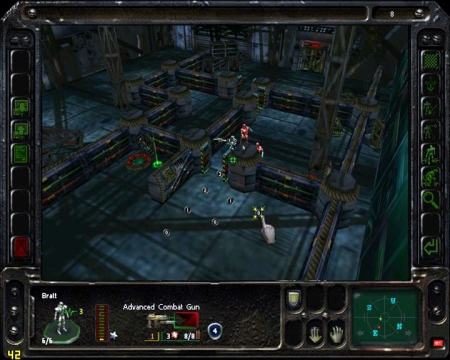Hey everyone, something a bit different today — I hope you’ll appreciate the variety, even if it means a lack of new painted models. So what is this about?
It’s very common for hobbyists to talk about their inspiration: Whether it comes down to creating conversions or narratives, most of us will inevitably build on influences and concepts from many different sources, such as film, art, literature or personal experiences from RPG groups. To wit, the entire 40k universe itself is based on so many different influences, and has grown into a massive, unwieldy, eclectic and brilliant mixture of a thousand references, ranging from 80s pop culture to every SciFi and gothic cliché ever.
Today’s post, therefore, will deal with yet another possible source of inspiration when it comes to get a feeling for the kind of narrative that would work in the 40k universe, and the kind of characters that would populate such a narrative. And while I draw lots of my own hobby inspiration from the aforementioned media (with sources as diverse as David Lynch’s Dune adaptation, Mervyn Peake’s Titus Groan & Gormenghast and Charles Dickens as some of my favourite influences), today I would like to talk about another possible influence: the wonderful world of video games.
Now some of you may remember that I am a huge video game nerd. It’s a medium that I have been endlessly fascinated with for a very long time now, and it continues to interest aesthetically, narratively and professionally .
I could wax poetical on the many fascinating, obscure or downright grotesque features that turn digital games into such a riveting subject for me, but that’s not really the focus of this blog. So let us rather focus on a couple of games that have influenced my hobby life by inspiring characters, narratives or just a general style in my own hobby work.
Before we begin, however, a disclaimer of sorts: By no means is the following collection of titles and influences an exhaustive collection, nor is it intended to be. It’s also very possible that you know each and every one of those games, so the post could turn out to be old news to you. And finally, to be fair, this post has also been simmering away in the back of my head for quite a while now, so be warned that it may actually have moved away from actual 40k a bit, dealing – at least to some degree – more with games and game series that I find inspiring, period. That being said, if you enjoy 40k and Inquisitor and all that, and if you are interested in visually and/or narratively interesting videogames, the following titles might be worth a look. And who know: Just like me, you may even get an idea for an army, a conversion or an INQ28 retinue out of it. So let’s take a look:
I. Legacy of Kain series
It seems weird to me that the Legacy of Kain series seems to have become almost a bit obscure by today’s standards, when it used to be a rather common household name in video game circles – and even a veritable system seller – during the late 90s and early 2000s.
The series’ development history is rather complicated and convoluted, with different developers and teams adding their own perspective to the series, and acclaimed video game writer Amy Hennig (possibly best known for her role on Naughty Dog’s Uncharted series these days) ending up with the task of somehow binding it all together into a semi-coherent overarching narrative.
Fascinating as those tribulations are, however, I don’t even want to get into the details here. Suffice it to say that the series started with Blood Omen: Legacy of Kain (basically “The Legend of Zelda” with vampires), which was followed by Legacy of Kain: Soul Reaver (basically “Tomb Raider” with Vampires). The series deals with the vampire Kain and his rise (and fall) in the gothic world of Nosgoth, and it introduced both a pretty interesting cast of characters as well as a very distinct look and feel. Just check out Soul Reaver’s intro movie:
One of the series major narrative arcs deals with the conflict between the – seemingly completely amoral – vampire overlord Kain and his fallen former lieutenant Raziel, turned into a twisted wraith at Kain’s behest and now out for revenge — although things turn out to be much more complicated than that, as the series’ narrative is just about as convoluted as its development history. It can be a bit overdesigned and wordy in places, but it’s well worth checking out for yourself!
So why does the series appear on my list? There’s the very grimdark setting, for one: Nosgoth is a very dark and gothic place, where everything’s gone to hell in a handbasket because the man destined to be the world’s saviour refused the ultimate sacrifice – his own life – electing instead to become a depraved, immortal vampire emperor, ruling a failing empire. If that isn’t grimdark, I don’t know what is.
But there’s more: Kain’s dealings with his vampire lieutenants and their ultimate fates remind me a lot of of 40k’s Daemon Primarchs and Traitor Legions: There’s a gravitas and a sense of lost grace here that should seem very familiar to anyone who likes 30k and 40k. There’s also a fair share of purple prose (and some truly excellent voice acting) to be had, so if you want to get a feeling of what a Chaos Space Marine might feel like after millennia of corruption and simmering regret, the Legacy of Kain series provides some very good inspiration on that account!
After several unsuccessful attempts at reviving the series in recent years, it’s unlikely we’ll ever see another entry. The games available so far still tell a (fairly) complete tale of hybris, revenge and redemption, however, and are well worth your time, provided you are prepared to deal with a bit of technical clunkiness (in the earlier games in particular). The entire series, minus the first Blood Omen, is still available via GOG.com, among others. The games cost about 5,00 Euros a pop, and if the series’ premise interests you, I recommend you just snatch them all up: I played nearly all of them back to back, a couple of years ago, and it really helps to get a grip on the rather complicated storyline. You can also read up on the games on Nosgothic Realm, an incredibly expansive fansite.
II. Primal
Like Legacy of Kain, Primal used to be a fairly high profile release back when it first came out in 2003. A Playstation 2 exclusive developed by Sony’s own Cambridge studio, Primal was a fairly ambitious project with incredible production values for the time. Not all that many people seem to remember it these days, which is a shame, especially since it has some rather interesting connections to Games Workshop — but we’ll be getting there in a minute…
The game’s basic premise seems clichéd enough: Perky goth chic Jen is nearly killed by a daemon who just happened to infiltrate a gig of her boyfriend’s Nu-Metal band (I swear I am not making this up!). With Jen’s boyfriend abducted, she finds herself transported to the fantasy dimension of Oblivion, which consists of four realms. The forces of order and chaos, respectively, seek to establish control over these realms, and Abaddon, Lord of chaos, has come dangerously close to toppling the precarious balance of power.
So it falls to Jen, accompanied by adorable gargoyle helper Scree, to travel to the four realms, learn how to transform into different demon forms and re-establish the balance between chaos and order.
Mechnically speaking, Primal is one of those third person action adventure the early 2000s were so very fond of (think Tomb Raider with less climbing and more character interaction). If that doesn’t sound like much to write home about, it’s important to point out that Primal’s production values, its narrative and its pretty excellent cast take the whole affair into some rather interesting directions, so it’s far more interesting than its rather cookie-cutter premise would led you to believe.
There’s yet another reason why Primal would be interesting for every discerning fan of GW’s various IPs: Travelling the game’s world, you cannot shake a general feeling of …familiarity. Take the game’s four realms, serving as its massive levels, and their respective inhabitants: There’s Solum and the Ferai (totally not slightly more lawful-neutral Khorne-worshipping Beastmen), Aquis and the Undine (totally not victims to some kind of slightly Nurglite plague), Aetha and the Wraith (totally not Slaaneshi vampires) and, finally, Volca and the Djinn (totally not worshippers of Tzeentch). The latter, in particular, seem rather GW-ish in design — to the point where the Djinn would make for excellent Tzeentchian champions or daemon princes, as you can see in this video (starting at 11:40, in case YouTube’s timecode widget refuses to work):
Those similarities are far from coincidental, however, as Primal’s lead artist was none other than Mark Gibbons, one of GW’s most prolific artists and illustrators during the early to mid-90s. You know, the guy who did pieces like this:
His touch is very noticeable, and there is more than a little vintage GW in the character designs and artwork as well as the art design in the game proper:
What’s more, while the four realms and their inhabitants clearly recall GW’s chaotic factions, the whole idea of of four discreet realms in the game also somewhat recalls the realms that now appear in Age of Sigmar, even though AoS didn’t come around until fairly recently.
An emulated version of Primal is still available on the PlayStation Store (both for the Playstation 3 and 4), and it’s very much worth the price of admission: It may be trying a bit too hard to be edgy and grownup for today’s standards. and it may not be great literature, but the main characters’ banter makes them genuinely endearing, and the production values are still great, even from a modern perspective. And if nothing else, it’s a fascinating example of Mark Gibbons creating something that should feel more than a little familiar for longtime hobbyists, albeit in a different medium and for a different employer.
III. Dishonored series
This next entry is a far more recent series: If you are even slightly into video games right now, chances are you’ve heard of the Dishonored series. It is also one of my current favourites. And it feels a lot like an Inquisitor campaign every now and then, but maybe that’s just me 
Dishonored is set in the Empire of the Isles, a setting that invokes Great Britain (in the first game) and its colonies (in the second game) during the early 19th/early 20th century, albeit with a twist: Much of the Empire’s culture seems oddly familiar, but Dishonored’s world also presents a strange and intriguing clash of fantasy, (steampunk) technology and magic. What’s more, there’s a very particular look and feel to the whole affair, ranging from the – almost painterly -realism of its character design (call me crazy, but there’s more than a bit of New Objectivity to be found in the games’ art design) to the general bleak atmosphere of the world, with decadent nobles scheming and vying for power, as disinfranchised smallfolk suffer under their cruelty. Dishonored’s world is very dark, but also quite fascinating. It poses some interesting moral questions and goes to some rather interesting places with them. The way in which the games explore the morality of nonlethal solutions to many of its problems is just one very poignant example.
From a gameplay perspective, the Dishonored games can be visceral, combat-focused revenge fantasies or elegant stealth games — or anything in between, really, purely based on your preferred way of playing. What’s so mechanically great about the games is how they accomodate your playstyle and choices and make the world adapt accordingly in many interesting ways. Like I said, it’s one of my favourite game series at the moment 
As for the series’ position on this list, Dishonored can also feel very Inqusitor/INQ28 at times. It would be easy to imagine Dishonored’s Empire of the Isles as a civilised world within the Imperium of Man, and as the setting for an INQ28 campaign. For instance, whenever I read Apologist’s incredibly cool world building for his “Death of a Rubricist” setting, Dishonored is one of the things I feel acutely remembered of. Plans within schemes are very much at the heart of the series, and if you are into Inquisitor and its particular way of storytelling and world building, you’ll take lots of inspiration away from Dishonored — in fact, the world building alone is basically worth the price of admission!
The series consists of two main games (Dishonored and Dishonored 2) and one major spin-off campaign for each of the main games. Dishonored gets “The Knife of Dunwall” as a nearly game-sized DLC, whereas Dishonored 2’s spin-off campaign, “The Death of the Outsider” was recently released as a standalone title. All of the games are available on PC, Playstation 3/4 or Xbox 360/One, and I would very much recommend to check out the entire series, starting with the first title. If you’re even a bit like me, you’ll want to explore every nook and cranny of this truly breathtakingly realised world!


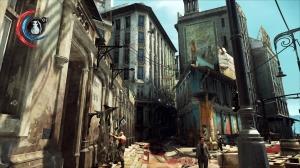
And while we are talking about Dishonored, let’s not forget about…
III.b …the Thief Series
Because I would be remiss not to mention the Thief series, which seems like Dishonored’s spiritual prequel (and a highly acclaimed stealth series in its own right). Thief only makes this particular list by association, it’s true, but the main reason for that is that its world is a fair bit more medieval (and thus less 40k) than Dishonored’s. Even so, fans of INQ28 and/or Mordheim in particular will doubtlessly find a lot to like about Thief’s dark, steampunk-ish world. Just to give you an idea, when I read the description of Queen Mab during the opening chapters of Dan Abnett’s novel Pariah (the first and, alas, to date only entry in the Eisenhorn vs. Ravenor series), I felt instantly reminded of The City from the Thief series.
IV. Resonance of Fate
A strange entry, this one, mostly because Resonance of Fate is a JRPG, with all the baggage and strangeness that entails: Now Japanese role playing games clearly aren’t for everybody, as they tend to have a particular tone and feel, one that is often informed by the peculiarities of Japanese pop culture. Personally speaking, I have a long personal history of playing JRPGs, however, going all the way back to the 8- and 16-bit days, so I can usually stomach, or even appreciate, the weirdness inherent to the genre.
Resonance of Fate is, on the face of it, very Japanese in many ways: It’s an eclectic combination of fantasy, cyberpunk, turn-based battles fought with guns (and almost ridiculous amounts of acrobatics) and classic JRPG tropes. What makes the game a definite candidate for this particular list, however, is its peculiar setting, Basel:
Basel is a multileveld city built around a massive central elevator. It was orginially constructed as a combined retreat for humanity and an atmospheric cleaning device, but it grew and became more complicated and essentially turned into a massive, sprawling city over the centuries — a veritable Hive city by any other name.

And while Basel may look strange and far different from the hive cities of 40k, the game really does an excellent job of depicting a society that has developed around the basic challenge of living within a massive machine: Towns and villages are wedged into Basel’s open spaces, with giant cogs ticking away in the background. The strata of older cultures and settlements are clearly visible in many places, and most people have clearly forgotten the massive facility’s original use, content to eke out a living among its unknowable mechanisms. The rest of the setting confirms to this basic conceit: Instead of dragons and orcs, you get to fight modern bandits and runaway biological experiments.
Which is all a rather roundabout way of saying that, in spite of its copious amounts of JRPG tropes, Resonance of Fate can almost feel like a Japanese take on Necromunda. Which, in turn, can make it fascinating to check out for a fan of GW’s various 40k-related settings.
When all is said and done, however, Resonance of Fate is still a very Japanese game indeed, with all the tropes and quirkiness that entails. If you can stomach the occasional weirdness (the odd jokes, the dressup meta game, the weird gender stereotypes and the sometimes awkward pacing and dialogue), it’s a fascinating, quirky little game. The following video shows some of the gameplay, and I had an especially strong Necromunda moment starting at 6:26, with the heroes passing through the artifacts of prior civilisations while making their way from Basel’s highest level, the Chandelier, to the lower residential areas:
The fact remains that Resonance of Fate can be a bit of an acquired taste — even moreso, arguably, than mainstream JRPGs like Final Fantasy. You may want to take a look at the game’s prologue below to find out whether the general tone and style is for you:
V. Basically anything by Yasumi Matsuno
Yasumi Matsuno is a fascinating director and author because he stands for a very particular kind of RPG world and storytelling. Instead of fairy tale romps that end with the heroes defeating a mustache twirling demon lord to save the world, Matsuno’s games (and game worlds) are invariably steeped in realpolitik: They always deal with the politics going on in the background, the shady deals and painful sacrifices that keep kingdoms and empires going while creating tragedies for the protagonists. Unlike most roleplaying games, Matsuno’s titles usually don’t put you in the shoes of the idealistic hero saving the world due to sheer spunk and virtue: You just do your best while history – and politics – march on relentlessly in the background. And even if you should end up saving the world, don’t expect anyone’s thanks for it! Chances are, you’ll go down in history as a dangerous heretic…
There are also numerous shout outs to real world history: Tactics Ogre is basically a medieval fantasy version of the Yugoslav Wars. Final Fantasy Tactics (very much Tactics Ogre’s spiritual sequel) is basically the War of the Roses with dragons and Chocobos (it is also one of the finest strategy RPGs ever devised by man).
While all of Matsuno’s games are very much worth checking out, I want to point you towards some titles in particular, starting with Vagrant Story: a strange and darkly beautiful game that is one of my all-time favourites, and maybe Matsuno’s definitive piece of work:
Vagrant Story is a take on Western RPG and dungeon crawler conventions with a fascinating story about different factions trying to get their hands on the dark magics resting within the lost city of Leà Monde.

You’re cast in the role of one Ashley Riot, basically a medieval special ops soldier. Your goal is to infiltrate the lost city, rescue the hostages taken by a religious cult and prevent its members from claiming the city’s dark power for their own. You soon find out that things are far more complicated, however, and that there are more parties interested in Leà Monde and its legacy.
Vagrant Story is known for several things: Its incredible art design. Its dark and mature storytelling. Its punishing take on western roleplaying and dungeon crawling conventions. And, certainly not least of all, its acclaimed English translation by Alexander O. Smith, among others, adding an extra layer to an already incredibly elegant narrative.

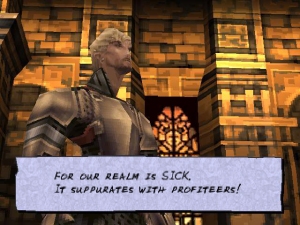
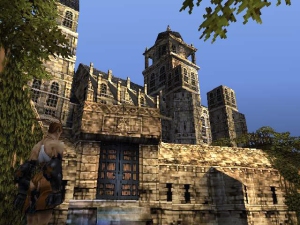

I don’t even want to tell you too much about Vagrant Story, because it has to be experienced firsthand. It’s a punishing and darkly mysterious experience. If you enjoy deep, ambiguous tales and thought-provoking narratives, you should check it out. It’s quite a ride, indeed, and it can be had for a song on the PlaystationStore.
One of Yasumi Matsuno’s biggest mainstream games, set in the same world as Final Fantasy Tactics and Vagrant Story, is Final Fantasy XII, a mainline entry in the colossally successful Final Fantasy series.
Like Matsuno’s other games, FF XII is a triumphant exercise in world building, with a setting that seems like it could actually exist somewhere and wouldn’t wink out of existence the moment you switch off your console. Once again, there’s also a lot of background politics at play here, with history’s gears very much in motion while your band of heroes is gallivanting around the world of Ivalice.
It’s a rather interesting subversion of many of Final Fantasy’s classic tropes, as well as a fascinating look at what Matsuno can get up to with a bigger budget — at least partially so, as he had to drop out of the project late into its development. The game is still quite something, though! It’s still widely available on Playstation consoles, with a remastered version (“Final Fantay XII – The Zodiac Age”) released earlier this year.
As for its influence on my 40k hobby, among many other things, let’s just say that I am still looking for a way of creating a 40k-compatible way of incorporating Final Fantasy XII’s Judges into my INQ28 setting…





Matsuno’s obvious love for the classic western pen & paper RPG finally came full circle with Crimson Shroud, released in 2012 as a fairly obscure download-only title for the Nintendo 3DS (at least in the west):
In many ways, Crimson Shroud mirrors many of Vagrant Story’s story beats (and much of its general look and feel): A small group of adventurers infiltrates the ruins of a palace in search of the eponymous artifact. There they encounter not only many vicious creatures, but also a dark and tragic story going back centuries. The narrative is both concise and nuanced, especially for a smaller digital release like this.
What makes Crimson Shroud truly captivating, however, are the lenghts to which the game actually emulates classic pen & paper roleplaying — to the point where you throw virtual dice to determine the outcome of most actions in the game and all the characters and monsters are displayed as actual miniatures mounted on their own small bases and placed within diorama-like backgrounds, making the whole thing seem like an actual tabletop roleplaying session.

If that sounds weird, it certainly is, and it’s not exactly easy to pick up and play. But everything that’s fascinating about a Matsuno game – such as the nuanced storytelling and excellent world building – also make an appearance here, creating a sublime narrative experience almost on par with Vagrant Story. Plus the game is a fascinating love letter to western tabletop gaming, as seen through a distinctly Japanese lense.


Honorary mention: Incubation
Okay, let’s treat this last game as a bit of an out of competition entry, but I still need to mention Incubation: Released in 1997 as part of the – then pretty successful (at least in Germany) – Battle Isle series, Incubation basically worked as the first really cool squad-based Space Marine game without even being a GW-licensed title.
Incubation probably seems incredibly primitive by modern standards, but back then, it felt like a revelation: I remember loving GW and 40k even back then and hoping they would end up making a game based on their IPs that didn’t suck — but it actually never came to that, at least not back then. But a German developer made a game about vanilla SciFi-troopers (totally not Space Marines) fighting against a slightly weird alien race (totally not the Tyranids), and after playing it, I kept asking myself why GW couldn’t have come up with that kind of game — or at least given the license to these guys…
Funnily enough, Incubation is actually still available as part of the Battle Isle Platinum Pack, but I couldn’t really tell you whether or not it has aged all that gracefully. I will affirm though that it felt like an excellent Space Marine game long before GW themselves got their act together on that front, and that’s enough to be included in this list!
So yeah, so much for my – entirely subjective and woefully incomplete – list of video games that have fed into my hobby over the years. I would love to hear your feedback, both on the nature of this post as well as on the actual choices I have made: Was this an interesting subject, in spite of only dealing with the actual hobby in a slightly roundabout way? And did I miss any games that should be included on this list? You are very welcome to contribute your own favourites!
In any case, thanks for looking and stay tuned for more!
Filed under: 40k, Inq28, Inquisitor, Pointless ramblings, Totally worth it Tagged: dishonred, games, INQ28, Inquisimunda, inquisitor, inspiration, legacy of kain, narrative gaming, Resonance of Fate, thief, totally worth it, Vagrant Story, video games, videogame, Yasumi Matsuno


